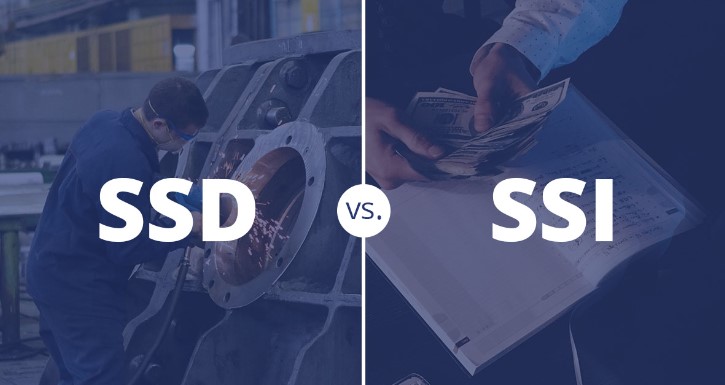SSI vs. SSDI: Key Differences and Eligibility Criteria

Navigating through various social security benefits can be confusing, especially when it comes to Supplemental Security Income (SSI) and Social Security Disability Insurance (SSDI). Both programs aim to provide financial assistance to individuals with disabilities, yet they differ significantly in eligibility criteria and benefits. This blog post will demystify these two crucial programs, helping you understand their key differences and the qualifications needed to benefits from them.
What is SSI?
Supplemental Security Income (SSI) is a federal program designed to provide financial assistance to elderly individuals, blind individuals, and people with disabilities who have limited income and resources. The primary goal of SSI is to help meet basic needs for food, clothing, and shelter.
What is SSDI?
Social Security Disability Insurance (SSDI) provides benefits to disabled individuals who have previously worked and paid Social Security taxes. Unlike SSI, SSDI is an insurance program funded through payroll taxes, meaning eligibility and benefit amounts are based on your earnings record and work history.
Key Differences Between SSI and SSDI
While both programs aim to support disabled individuals, they differ significantly in their funding sources, eligibility requirements, and benefit structures. Understanding these distinctions is essential to determine which program may be right for you or your loved one.
Eligibility Criteria for SSI
To qualify for SSI, you must meet specific income and resource limits. Generally, you must have less than $2,000 in countable resources ($3,000 for a couple). Additionally, your income must fall below certain thresholds, which vary depending on your living arrangements and other factors.
Eligibility Criteria for SSDI
To be eligible for SSDI, you must have a qualifying disability and meet the work credits requirement. Typically, this means having worked and paid Social Security taxes for a specified duration based on your age. The size of your benefit depends on your earnings record.
REad also: Future from Home: The Evolution of Remote Work Technologies
Application Process for SSI
Applying for SSI involves completing several forms and providing documentation to verify your financial situation and disability status. This process can be time-consuming, often requiring detailed medical records and other supporting documents.
Application Process for SSDI
The application process for SSDI is similar to SSI but focuses more on your medical condition and work history. You’ll need to provide evidence of your disability, along with records of your employment and earnings.
Financial Benefits of SSI
SSI benefits are fixed and determined by federal and state standards. In 2023, the maximum federal benefit for an individual is $841 per month, though some states offer additional payments. These benefits are intended to cover basic living expenses.
Financial Benefits of SSDI
SSDI benefits are based on your average lifetime earnings before your disability began. The average SSDI payment in 2023 is $1,358 per month, though your amount may vary based on your earnings history.
Medical Coverage for SSI Recipients
SSI beneficiaries are typically eligible for Medicaid, a state and federal program that provides health coverage to low-income individuals. Medicaid covers a wide range of medical services and can be a vital resource for those with limited financial means.
Medical Coverage for SSDI Recipients
SSDI recipients become eligible for Medicare, a federal health insurance program, after a 24-month waiting period. Medicare provides comprehensive medical coverage, including hospital and outpatient services, making it easier to manage healthcare costs related to disabilities.
Appeal Process for Denied Claims
If your application for SSI or SSDI is denied, you have the right to appeal the decision. This process involves several steps, including reconsideration, a hearing before an administrative law judge, and potentially, further review by the Appeals Council or federal court.
Common Misconceptions About SSI and SSDI
Many people misunderstand the differences between SSI and SSDI. One common misconception is that you can only receive benefits from one program. However, it is possible to qualify for both programs simultaneously, depending on your individual circumstances.
Importance of Legal Assistance
Navigating the complexities of SSI and SSDI can be challenging. Seeking assistance from a legal professional specializing in Social Security benefits can improve your chances of a successful application or appeal, ensuring you receive the support you need.
Conclusion
Understanding the key differences between SSI and SSDI is crucial for individuals seeking financial assistance due to disability. While both programs offer vital support, their eligibility criteria, benefits, and application processes vary significantly. By familiarizing yourself with these distinctions and seeking appropriate guidance, you can make informed decisions about the best course of action for your situation.




